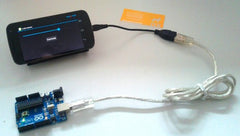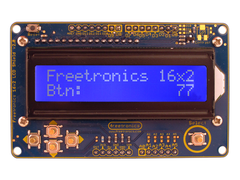The team at the Adelaide (Australia) Hackerspace have been experimenting with our dot matrix display boards, and demonstrated a version of Conway's "Game of Life" software running effectively on the display. For the curious this is a simple one-player automated game. Each player (or LED) lives or dies based on the number of players around it. This provides an random display of LEDs in which you can soon see the patterns of life and death, for example:
This is another great implementation of the Game of Life and also the use of a DMD. Kudos to the hackerspace team for their efforts. For the Arduino sketch and files, visit the project GitHub page here. And we're on twitter and Google+, so follow us for news and product updates as well.

As you can see above the hackerspace used a Freetronics Dot Matrix Display. Available in a variety of colours, they consist of a 32 by 16 matrix of LEDs. Included with the DMD is a cable to directly connect with an Arduino-compatible board, and at low brightness (which is still fine to read indoors) you can power one DMD from the Arduino. However by connecting 5V at 2.5A for each board they operate at a brightness which is visible anywhere. Furthermore you can daisy-chain (with the included cable) six or more displays for great effects. So for more information head over to the DMD pages today.




















